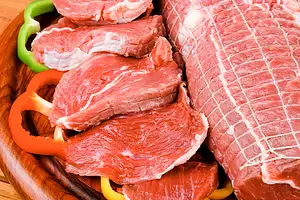Cauliflower florets
About the ingredient cauliflower florets. Including 287 recipes with cauliflower florets, nutrition data, photos, and where to find it.

Contents
What are cauliflower florets?
Cauliflower can be roasted, boiled, fried, steamed or eaten raw.
When cooking, the outer leaves and thick stalks are removed, leaving only the florets.
The leaves are also edible, but are most often discarded.
The florets should be broken into similar-sized pieces so they are cooked evenly. After eight minutes of steaming, or five minutes of boiling, the florets should be soft, but not mushy (depending on size).
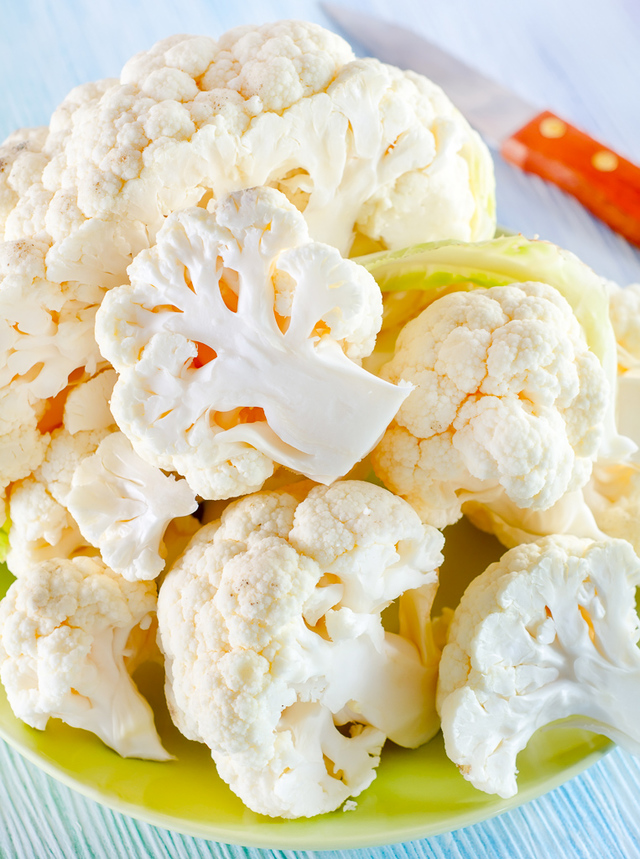
Stirring while cooking can break the florets into smaller, uneven pieces. Cauliflower is often served with a cheese sauce, as in the dish cauliflower cheese.
Low carb dieters can use cauliflower as a reasonable substitute for potatoes for while they can produce a similar texture, or mouth feel, they lack the starch of potatoes.
Cauliflower is low in fat, high in dietary fiber, folate, water and vitamin C, possessing a very high nutritional density.
Cauliflower also contains other glucosinolates besides sulfurophane, substances which may improve the liver's ability to detoxify carcinogenic substances.
A high intake of cauliflower has been found to reduce the risk of aggressive prostate cancer.
Nutrition
Nutrition Facts
Serving Size 1 cup (100g)Where found
Cauliflower florets are usually found in the produce section or aisle of the grocery store or supermarket.
Food group
Cauliflower florets are a member of the Vegetables and Vegetable Products US Department of Agriculture nutritional food group.
How much do cauliflower florets weigh?
| Amount | Weight |
|---|---|
| 1 cup | 100 grams |
| 1 floweret | 13 grams |
| 1 head, large (6-7" dia) | 840 grams |
| 1 head, medium (5-6" dia) | 575 grams |
| 1 head, small (4" dia) | 265 grams |
Related
Vegetables and Vegetable Products
| In Chinese: | 菜花小花 | |
| British (UK) term: | ||
| en français: | fleurons de chou-fleur | |
| en español: | coliflor |
Recipes using cauliflower florets
There are 287 recipes that contain this ingredient.
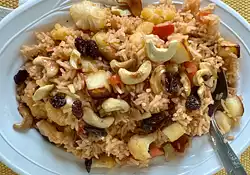
Paneer Basmati Pilaf--Paneer Pulao
Paneer Pulao is a delightful and mildly aromatic Indian rice dish that combines basmati rice with paneer, which is a type of Indian cottage cheese.
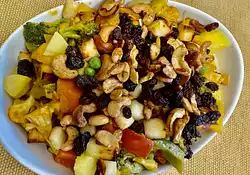
Moghul Style Mixed Vegetables with Paneer
Moghul Style Mixed Vegetables with Paneer recipe
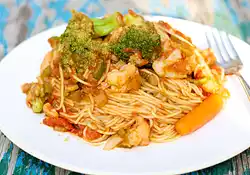
Vegetable Spaghetti Sauce
This delicious spaghetti sauce is loaded with heart healthy ingredients. After trying this sauce, you will always skip the store-bought ones.

Yummy Creamy Cauliflower Soup
Creamy Cauliflower Soup recipe
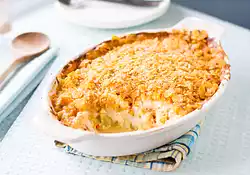
Cheesy Cauliflower Casserole
A comforting dish that combines tender cauliflower florets with a rich and creamy cheese sauce. This delicious casserole is baked to perfection, creating a golden and bubbly top that is simply irresistible. It's a great vegetarian main or side dish for any weeknight, and a great way to sneak in some veggies for those who might be a bit picky.

Cauliflower purée
Hell's Kitchen rich and smooth Cauliflower purée, prefect for garnishing other dishes

Basic Cauliflower Fried Rice
Paleo friendly. Good substitution to rice

Cauliflower Au Gratin
Yum. It was creamy, cheesy and packed with deliciousness. This was definitely one of the best recipes to cook cauliflower. Ham just added enough hint.
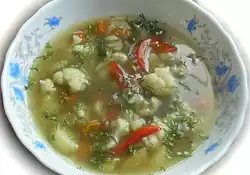
Cauliflower & Savory Soup
I cooked this soup 3 times lately, and the best base is turkey- chicken stock in my opinion. Just a summer soup made of many stems.

Roasted Curried Cauliflower
Just made this roasted curried cauliflower for lunch, and it was very tasty. Loved how sweet the onions came out after the roasting with the strong caramelized flavor as well, yum. The cauliflower florets were tender with a little bit crisp, perfect texture :)
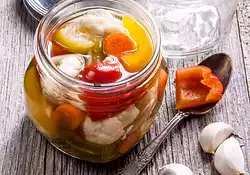
Dot's Pickled Vegetables
Dot's Pickled Vegetables recipe

Easy Crescent Vegetable Pizza
This easy crescent roll vegetable pizza is a favorite go-to for potlucks, showers, or wherever there's a hungry crowd. Use leftover veggies or your lastest garden harvest for toppings.
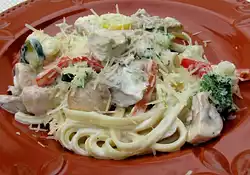
Garden Primavera Fettuccini
"This delicious main dish is really open to your own taste in fresh vegetables. Feel free to switch your favorites for your not-so-favorite ones. Some have even suggested adding mushrooms, garlic, diced cooked chicken and extra sauce."

Roasted Spiced Cauliflower with Tomatoes
Delicious! I wasn't sure about the flavor before I made this dish, I was so glad that I made it, and it came out so flavorful and tasty.
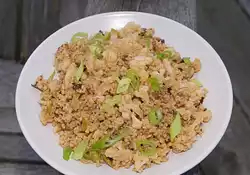
Cauliflower & Couscous Pilaf
In this recipe, we use whole wheat couscous instead of rice, we add orange juice and currant, so the pilaf is sweet too.

Susie's Low Fat Cheesy Veggie Bake (Crockpot)
My version of a low fat but cheesy vegetable bake for your slow cooker (CrockPot).

Golden Tofu & Fresh Veggies with Maple Barbecue Sauce
There are a lot of ways to cook tofu, this is one of the most tasty way, tofu is cooked golden brown, coated by maple barbecue sauce, if you think tofu is no flavor, try this recipe, you will be satisfied.
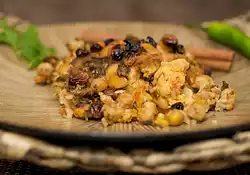
Chana aur Sarson ka Saag Biryani (Basmati Rice & Curry Casserole)
This Indian dish is made with several kinds of spices, mustard greens, cauliflower and chickpeas; it's baked with basmati rice, topped with golden raisins and cashews. You can serve it as a side dish or a tasty main dish.

Thai Cauliflower Curry
A bit sweet, sour with slightly spicy, this Thai cauliflower curry has lots of deliciousness that coconut milk, fish sauce and Thai curry paste have delivered. Serve it over a bed of rice that helps to soak up all the goodness.
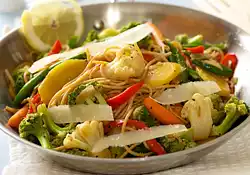
Fettuccine Primavera
A quick, easy yet delicious one pot meal, perfect supper for busy week days.

Vegetable Biryani
Our Indian-Tibetan friend came to our place this past Monday, this vegetarian biryani recipe was the main dish we made for him. It was quite flavorful and tasty, he certainly enjoyed it, and so did we.





